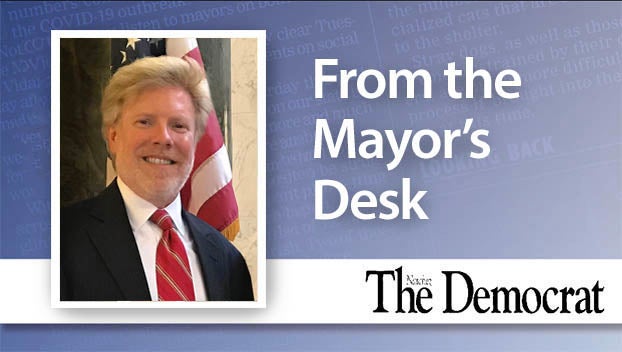Flood control efforts recall arms race
Published 12:03 am Sunday, April 1, 2018
At the height of the nuclear arms race, the U.S. and the old USSR reached stalemate — Mutually Assured Destruction. Each side could destroy the other. So, neither launched the first missile. Both eventually reduced their arsenals. (“Dr. Strangelove” was fiction.)
There is an older arms race that could end in disaster, however. It started in 1928 when Congress told the U.S. Army Corps of Engineers: no more disasters like the 1927 flood. There have been no levee breaks since then. Or epic rains — that caused them.
The Corps has spent $14 billion and says it has prevented a trillion dollars of flood damage. But floods are getting higher, more frequent and longer even without epic rains. Four of the five highest floods at Natchez happened since 2008. The river has been above flood stage eight of the last ten years vs once every 6.5 years from 1940-1972.
The river has risen 10 feet since 1972. Levees haven’t. The river is not deranged like Dr. Strangelove’s general who triggered the Doomsday Machine. It’s just flowing to the Gulf. If it got there faster, it would be lower. And flood less. Congress and the Corps slow it down. Why?
Politics. The Corps has built levees to contain the river and has shortened and straightened it to speed it to the Gulf. Flow has increased due to development upriver, and slightly greater rainfall. The greater flow gets to the lower stretch of the river faster than it discharges to the Gulf. So the river rises. Part of the Corps plan works. Part doesn’t. Part is missing.
A floodway is missing. It was to send flow from the Mississippi (near Greenville) to Morgan City, Louisiana, via the Red and Atchafalaya rivers and reduce flow reaching the lower stretch of the river. In 1935 politics killed it because farmers in Arkansas and Louisiana would flood more.
A million acres inside the levees flood every year now. Another half million acres floods when the Yazoo and other tributaries can’t flow into Mississippi at flood stage.
How to slow the rising river and reduce the flooding? Discharge more water. Where? The only place left to do it is the Old River Control Complex just above Baton Rouge. It has the capacity to discharge more flow down the Atchafalaya to the Gulf at Morgan City. But the Corps doesn’t use it. Why? More politics — the 1954 Flood Control Act.
Would more flow help? Yes, it would have lowered the 2016 flood crest 8 feet at Baton Rouge, 2 feet at New Orleans and 2 feet at Natchez, according to a Corps model of the flood.
Why doesn’t the Corps send more flow through Old River and lower all floods? The 1954 Flood Control Act prevents it. Why not change the act? The Corps says it’s not necessary. It has the river under control.
Stalemate? LSU hydrologist Dr. Yi-Jun Xu doesn’t think so. He says a major flood could cause the river to change course down the Atchafalaya.
That route to the Gulf is shorter and downhill all the way. Gravity makes water run downhill.
The old channel at New Orleans is higher and almost flat. It has silted in since the last course change some 800 years ago. It has changed about every 800 years for the last 8000 years. It’s about time to change again. Gravity is inexorable.
It wouldn’t be Doomsday, but it would turn Baton Rouge and New Orleans into stagnating cities on a saltwater estuary. And Morgan City into the new New Orleans — after massive disruptions of the nations’ commerce and billions or trillions in infrastructure spending.
Could the Corps delay it? Maybe. How? Discharge more flow at the ORCC. Lower the river and reduce the frequency, duration and height of floods — and the risk of a levee failure.
What’s the downside? More flow and sediments down the Atchafalaya. Good or bad? Depends on who you ask.
There will be opposition to change regardless. Where do the politicians come down? Do nothing — until public opinion changes.
And hope that major flood doesn’t happen before then, or before the next election or promotion.
Kelley Williams is founder and chairman of Bigger Pie Forum, a think tank that endeavors to explain political and economic issues in Mississippi that affect the economy and quality of life.




